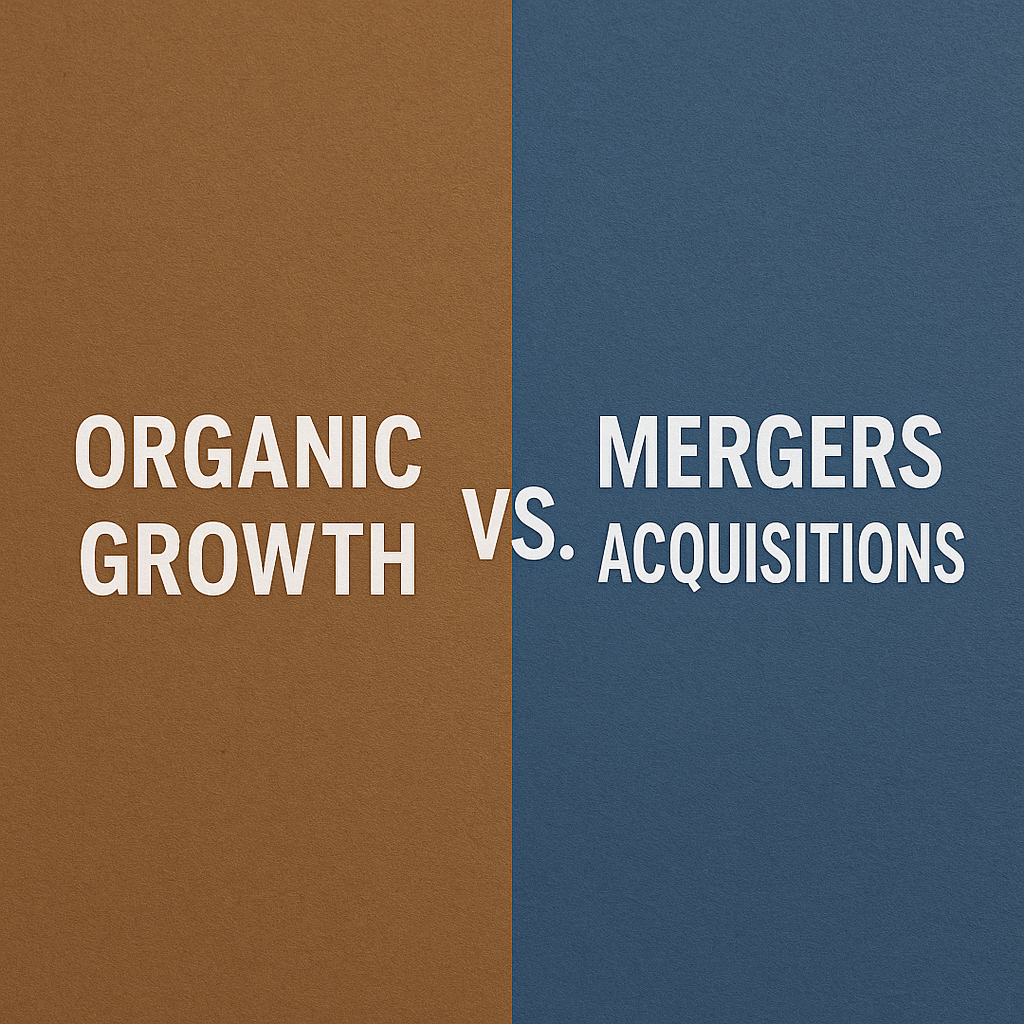Private Company Valuation Guide: How To Calculate What Your Business Is Really Worth
Understanding how to value a private company is essential, whether you’re preparing for a sale, securing investment, planning a leadership...
The mergers and acquisitions (M&A) process is very complex and requires careful planning and precise execution. It is often considered both a science and an art, involving multiple stages essential for a successful transition. This research aids in identifying companies that are performing well, those that may be struggling, and those that might be open to acquisition.
Despite the challenges, M&A activities are indispensable for companies aiming to achieve rapid growth, strategic realignment, and increased market share. These transactions serve as pivotal mechanisms for business expansion, enabling companies to acquire new capabilities and enter new markets.
This blog aims to demystify the intricacies of the M&A roadmap by offering a comprehensive walkthrough of the entire process. Exploring the various aspects that underpin successful M&A transactions, we hope to equip you with a clearer understanding of what it takes to navigate this complex procedure.
This guide will provide valuable knowledge whether you are a business executive contemplating a merger, a stakeholder involved in facilitating an acquisition, or simply someone interested in gaining insights into corporate strategy.
Let’s begin.
Before exploring the merger and acquisition process, it’s essential to establish what they entail.
A merger involves combining two companies to form a new entity, while an acquisition involves one company purchasing another and absorbing its business operations. Both strategies aim to enhance competitive advantage, diversify offerings, optimize resources, and drive revenue growth.
The merger and acquisition process can be divided into several distinct stages, each with its own set of activities and considerations. Understanding these M&A steps can help ensure thorough planning, execution, and post-integration success.
The first stage in the merger and acquisition process is strategy development. Here, the acquiring company identifies its reasons for pursuing a merger or acquisition. A well-defined strategy provides a clear focus and helps identify suitable target companies.
Key Activities
The acquiring company must clearly articulate its objectives for pursuing a merger or acquisition. These objectives could include enhancing competitive positioning, diversifying product offerings, or reducing operational costs. The clarity of these goals is crucial as they guide the entire M&A process and guarantee alignment with the company’s vision and long-term business goals.
A comprehensive market analysis involves assessing industry trends, competitive dynamics, and potential growth opportunities. This step helps the acquiring company understand the market landscape and identify areas where an acquisition could create significant value. Market analysis also involves evaluating the regulatory environment and potential barriers to entry into the target market.
The acquiring company establishes specific criteria for identifying potential targets based on the strategic goals and market analysis. These criteria include company size, financial performance, market position, technological capabilities, and cultural fit.
Once the strategy is clearly established, the next step is identifying potential target companies. This involves thorough research and due diligence to find firms that fit the strategic objectives and selection criteria outlined in the strategy phase.
Key Activities
Market research is the foundation of target identification. It requires gathering comprehensive data on the industry, market trends, and competitive landscape. This research helps understand which companies are performing well, which ones might be struggling and which might be open to acquisition.
Once the market research is complete, the next step is to create detailed profiles of potential target companies. Company profiling analyzes each target’s financial health, market position, product offerings, customer base, and growth potential.
After profiling, an initial screening process is conducted to narrow the list of potential targets. This involves evaluating each company against the predefined selection criteria and strategic objectives. Factors such as revenue, profitability, and market share are considered. The screening process helps eliminate unsuitable candidates and focus on companies with the highest potential for a successful merger or acquisition.
Having identified potential acquisition targets, the next critical stage is the preliminary valuation and assessment. This is one of the most crucial M&A steps, as it involves a careful examination of the potential target’s financial viability and strategic alignment with the acquirer’s goals.
Key Activities
Financial analysis involves delving deep into the target company’s financial statements. Key metrics such as EBITDA (Earnings Before Interest, Taxes, Depreciation, and Amortization), revenue growth rates, profitability ratios, and debt levels are scrutinized to gauge the target company’s financial health and performance.
Conducting a SWOT analysis provides a holistic view of the target company. Strengths and weaknesses focus on internal factors, such as the target’s unique capabilities, resources, and areas needing improvement. Opportunities and threats, on the other hand, concentrate on external factors, including market trends, competitive dynamics, regulatory changes, and macroeconomic conditions.
Beyond financial metrics and strategic positioning, cultural compatibility is crucial to a successful merger or acquisition. This involves evaluating the target company’s corporate culture, management style, and organizational values to ensure they complement the acquirer’s.
Strong leadership is crucial in the M&A process and in ensuring successful integration. Leaders must be proactive, decisive, and capable of managing change. Without robust management, even the most promising mergers and acquisitions can fail, often due to misaligned objectives, poor communication or a lack of coherent strategy.
Key Activities
One of the first and most essential steps is to appoint a dedicated integration team. This team should be composed of high-caliber individuals from both organizations with the expertise, influence and commitment to guide the integration process. The team should include members with diverse skill sets, such as project management, finance, human resources, and operations.
Effective leadership goes beyond merely assigning tasks—it’s about inspiring the entire organization and cultivating a shared vision for the future. Leaders need to:
Effective integration planning is crucial for minimizing disruptions. A detailed roadmap and dedicated teams ensure that the integration process is well-coordinated and aligned with strategic objectives. This not only helps in achieving financial and operational goals but also fosters a smooth transition for employees and customers.
Key Actions
The integration roadmap is a comprehensive guide that outlines every step of the merger process. This roadmap should include:
Successful integration requires dedicated teams focused solely on the merger process. These teams should be composed of members from both organizations and include the following roles:
Regularly tracking progress and responding to emerging issues allows companies to mitigate risks, capitalize on opportunities and drive long-term success. This proactive approach enhances the integration’s efficiency and fosters a culture of agility and resilience, setting the stage for sustainable growth and value creation.
Key Activities
Establishing a robust system for monitoring progress is essential to ensure that the integration stays on track. This involves:
Even with meticulous planning, unforeseen challenges can arise during the integration process. Being adaptable and responsive is crucial for overcoming these obstacles. Adaptability and flexibility involve:
Going through the stages of mergers and acquisitions can be a daunting endeavor. Each phase requires a nuanced understanding, meticulous attention to detail, and seasoned expertise. The right advisory partner can make all the difference in these critical stages.
Wilcox Investment Bankers stands out as a beacon of excellence in the M&A advisory landscape. Our sharp industry focus, strategic insights, and personalized service ensure that your business is not just preparing for change but is poised to thrive through it.
Let Wilcox Investment Bankers be your trusted partner through every stage of your M&A process. Connect with us today.

Understanding how to value a private company is essential, whether you’re preparing for a sale, securing investment, planning a leadership...

Growth is a top priority for small business owners. Whether you’re capitalizing on early success or aiming to scale, your chosen growth strategy...

Mergers and acquisitions (M&A) are powerful strategies that enable businesses to grow and adapt. While the potential benefits of M&A are...

5 min read
Mergers and acquisitions (M&A) are integral strategies for businesses aiming to grow, diversify or achieve strategic goals. However, these complex...

2 min read
When investment banks or merger and acquisition (M&A) advisors pitch for new business, they often try to differentiate themselves based on the...

2 min read
Owners considering a business sale can take proactive steps that will greatly enhance the value of their business. As a boutique investment bank...
